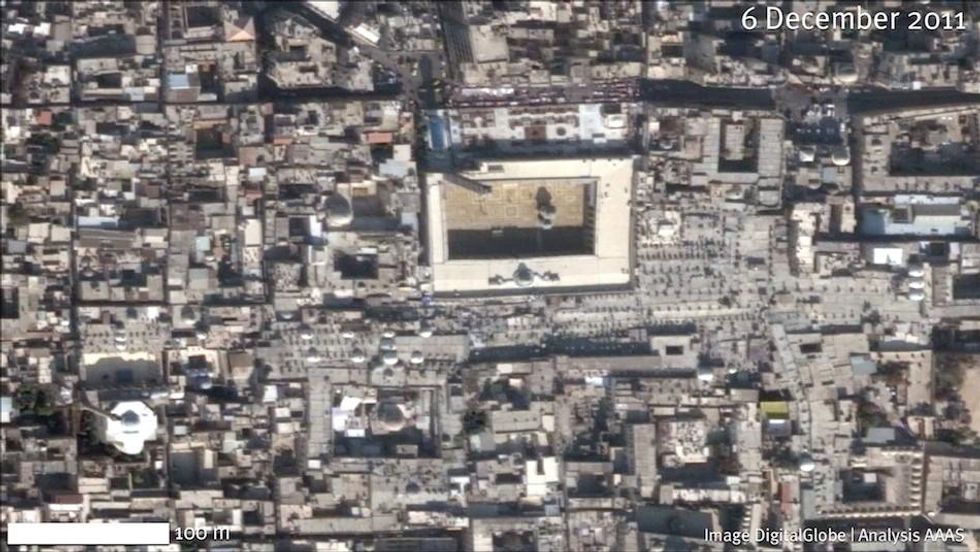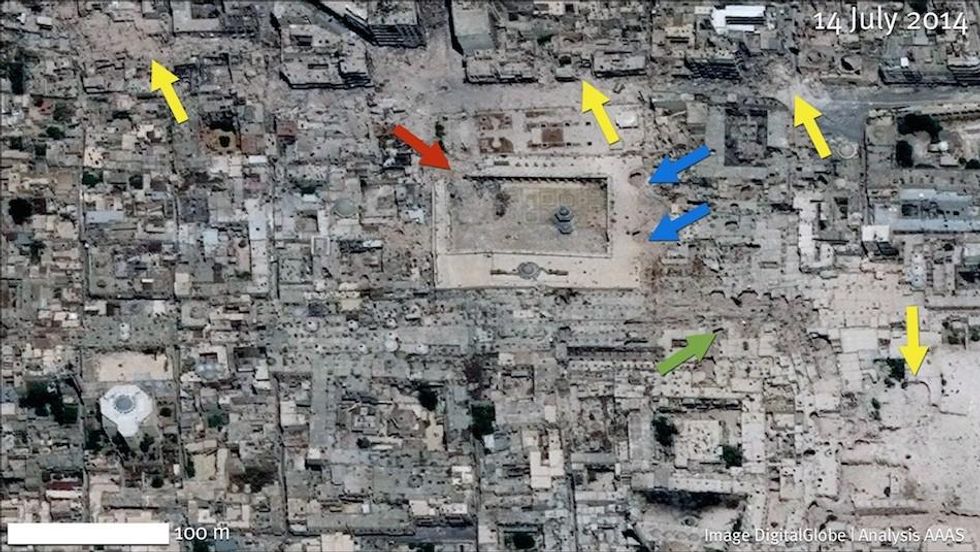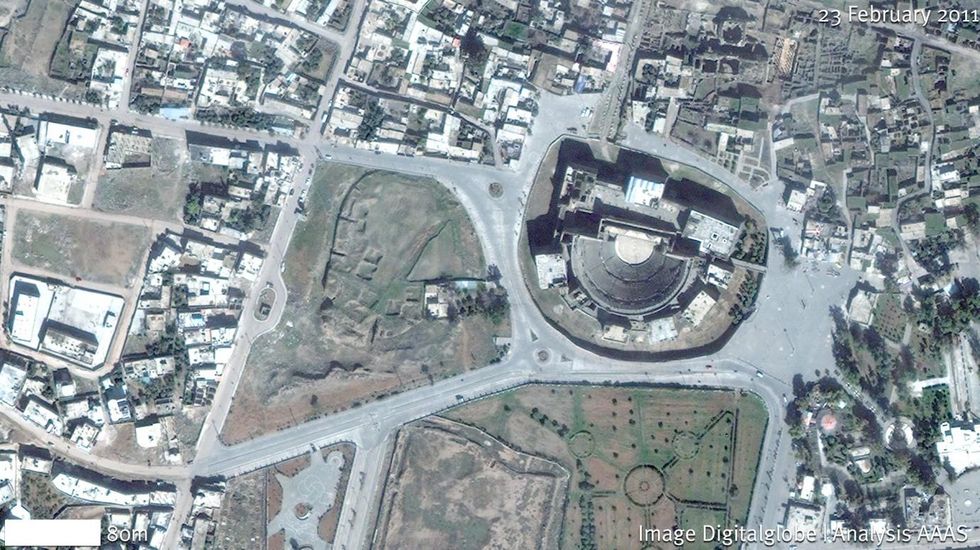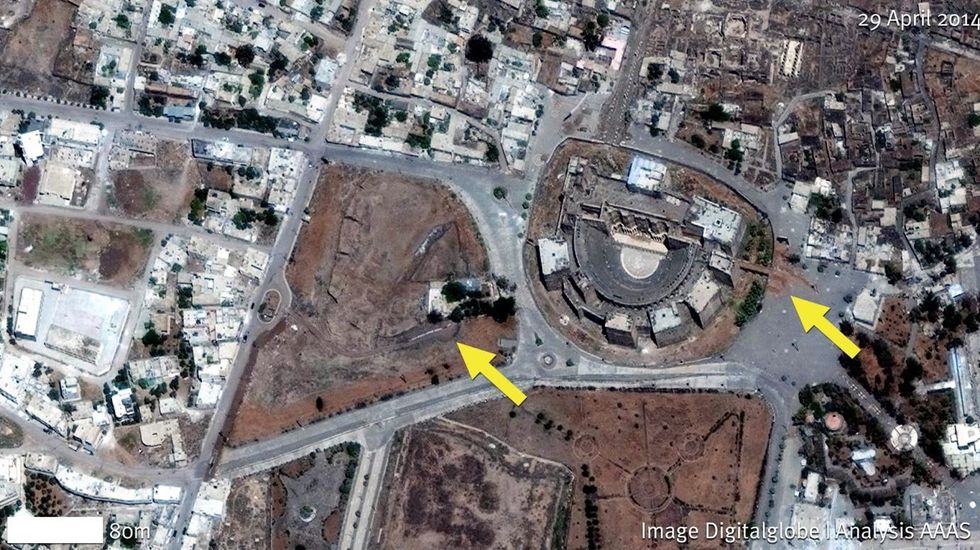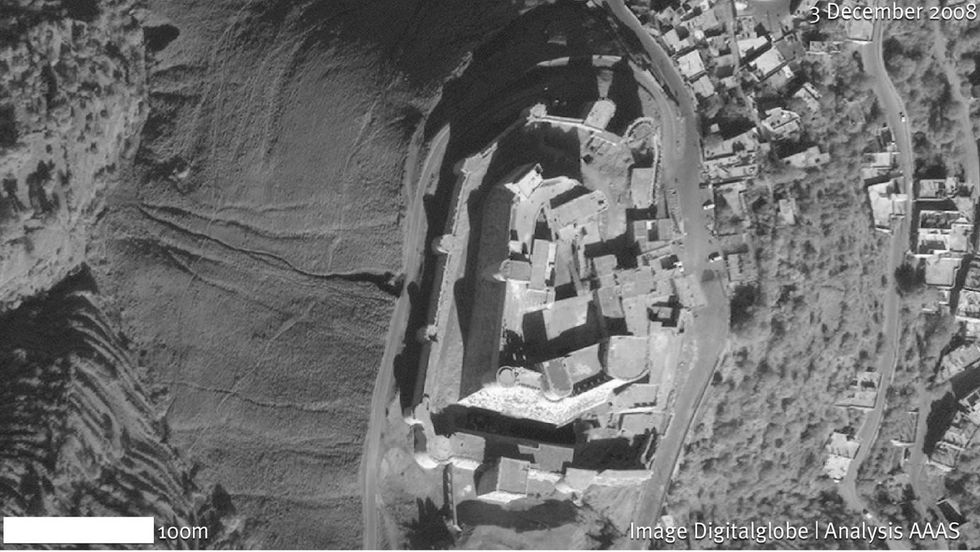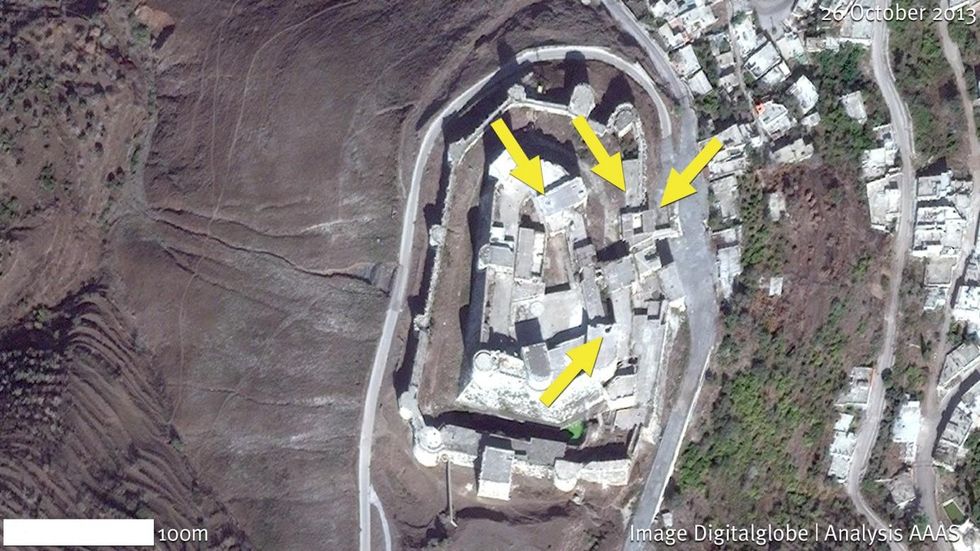News
Evan Bartlett
Sep 26, 2014
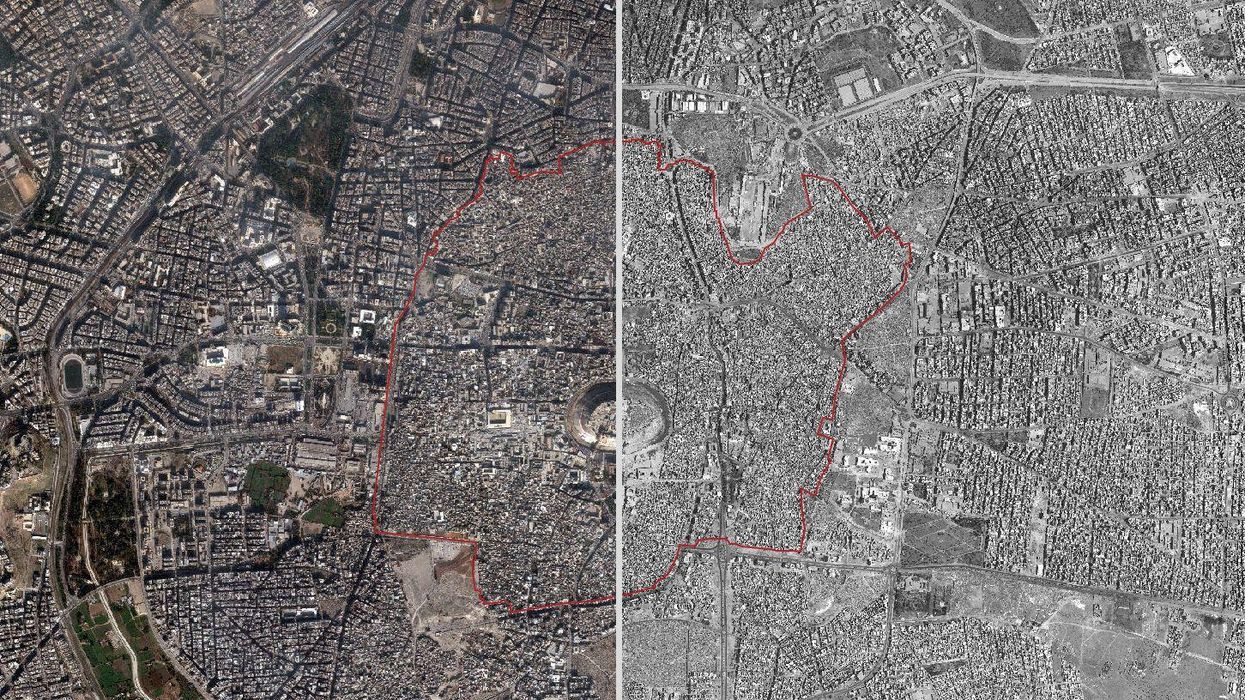
Satellite imagery showing the Ancient City of Aleppo
The latest UN estimates from last month put the death toll in Syria's devastating three-year civil war at a minimum of 191,000, while more than 3million refugees have been created.
As well as the horrific human cost, such destruction will leave terrible psychological damage on survivors for generations to come and with no political resolution remotely in sight, the country is being left to ruin.
Hospitals, schools, transport systems and sanitation have all suffered as a result of the war and thousands of years worth of heritage is also under threat too.
The American Association for the Advancement of Science (AAAS) has released this series of satellite images from six of the country's world heritage sites.
Aleppo
One of oldest continuously inhabited cities in the world, Aleppo has been home to some of the heaviest fighting in the civil war. The below images show the destruction around the ancient city's Great Mosque.
Roof of the Suq al-Madina (green arrow), the minaret of the Great Mosque (red arrow), two craters on the eastern wall (blue arrows). In addition, multiple nearby structures were heavily damaged (yellow arrows).
Bosra
According to the AAAS, the ancient city of Bosra is best known as a major archaeological site with remains from the Roman, Byzantine, and early Islamic periods including an ampitheatre dating from the 2nd century AD.
The Roman theatre and nearby archaeological site are fortunately undisturbed. By April 2014, however, earthen ramps and berms have been constructed near the theatre’s east entrance and a small hill at the site to the west has been partially excavated (arrows).
Crac des Chevaliers
Unesco describes Crac des Chevaliers as one of the most important preserved castles of the times of the Crusades (11th-13th centuries). However, it appears to have suffered significant damage in the last four years.
Between 2008 and 2013, a number of craters (yellow arrows) have appeared, one of which appears to have breached the roof of the south turret.
The AAAS analysis shows that five of the six Syrian World Heritage sites have sustained visible damage since the start of the war, with the ancient city of Damascus being the only site seemingly untouched.
However, they also warn that there may be forms of damage that are not visible from space.
The aim of the report is to "provide further detail on the timing of damage", in order to "enable US policymakers and other humanitarian agencies working in conflict zones to design more effective interventions".
You can read the AAAS's full study here and see an interactive map of the city of Aleppo here.
More: Informed but not involved: What do airstrikes mean for the Syrian regime?
More: UN report details the disturbing extent of Isis atrocities in Syria
Top 100
The Conversation (0)
